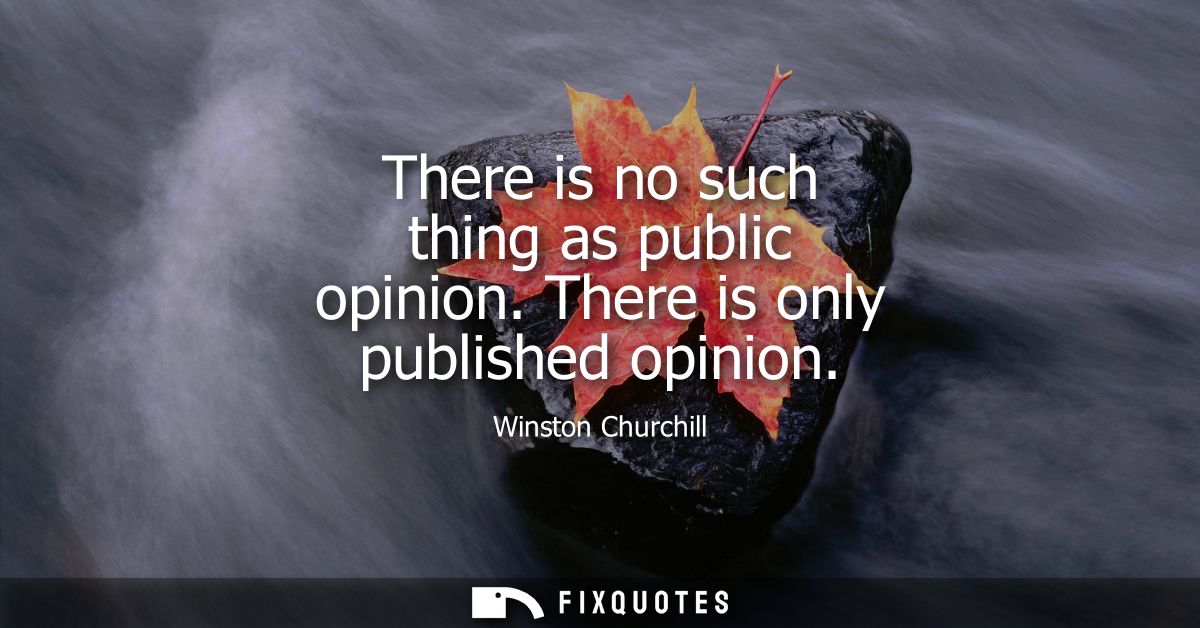"There is no such thing as public opinion. There is only published opinion"
About this Quote
Winston Churchill's observation, "There is no such thing as public opinion. There is only published opinion", incisively addresses the nature of collective thought and its representation in society. The statement underscores the distinction between what the public actually believes and what is circulated and amplified through various channels of communication, particularly the press and media.
Society often treats "public opinion" as a tangible, unified concept, assuming that the prevailing thoughts or attitudes of a people can be accurately discerned and reflected. However, Churchill suggests that what we perceive as public sentiment is heavily shaped, and sometimes even constructed, by the narratives chosen for publication. Since only certain views and interpretations reach widespread awareness, the so-called public opinion is less an organic aggregation of individual perspectives and more a product of selective dissemination.
The process begins with the gatekeepers of information: journalists, editors, and media proprietors. Whether intentionally or unconsciously, they choose which stories to cover, which voices to amplify, and which topics to highlight or suppress. Political, economic, and social pressures further direct these choices. As a result, the opinions available for public consumption rarely represent the full spectrum of beliefs held by society at large.
This dynamic raises important questions about the authenticity and representativeness of the opinions considered dominant or consensus. The loudest or most frequently published views are often mistaken for the majority perspective, influencing political decisions, cultural trends, and public policy. Meanwhile, minority, controversial, or unconventional opinions may be marginalized or ignored, reinforcing a cycle where published opinion masquerades as genuine public sentiment.
Churchill's reflection remains especially relevant in the digital age, where information is even more rapidly disseminated and shaped by algorithms, social networks, and personalized news feeds. Although the mechanisms of publication have evolved, the fundamental truth persists: widespread belief in a monolithic public opinion overlooks the complex, mediated nature of collective thought.
About the Author

